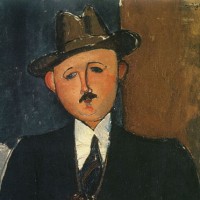-
Art Market Conference Seeks to Address Problems of Illicit Trafficking
01/30/2017
 A recent conference in Geneva reflects an attempt by private art-market actors to raise awareness and address the problems of illicit trafficking of art and antiquities. While such illegal activity in the art market is hardly limited to Switzerland, the nation’s freeports and custom-free zones make it particularly vulnerable to attempts to circumvent international laws. And the Geneva Freeport specifically is reeling from recent negative publicity—including the feud between Yves Bouvier and Dmitry Rybolovlev, the discovery of an allegedly Nazi-looted Modigliani painting, and the seizure of looted Syrian antiquities. In an attempt to raise awareness in the art market of risks facing the industry in Switzerland and abroad, the Responsible Art Market Initiative sponsored a conference directed to countering threats of money laundering and terrorist financing via art transactions. RAM, a non-profit initiative founded in Geneva in 2015, comprises a diverse group of art professionals, comprising dealers, consultants, and attorneys.
A recent conference in Geneva reflects an attempt by private art-market actors to raise awareness and address the problems of illicit trafficking of art and antiquities. While such illegal activity in the art market is hardly limited to Switzerland, the nation’s freeports and custom-free zones make it particularly vulnerable to attempts to circumvent international laws. And the Geneva Freeport specifically is reeling from recent negative publicity—including the feud between Yves Bouvier and Dmitry Rybolovlev, the discovery of an allegedly Nazi-looted Modigliani painting, and the seizure of looted Syrian antiquities. In an attempt to raise awareness in the art market of risks facing the industry in Switzerland and abroad, the Responsible Art Market Initiative sponsored a conference directed to countering threats of money laundering and terrorist financing via art transactions. RAM, a non-profit initiative founded in Geneva in 2015, comprises a diverse group of art professionals, comprising dealers, consultants, and attorneys.
The conference, held last Thursday, coincides with RAM’s release of art-market guidelines. While not legally binding, of course, the RAM guidelines reflect an attempt by private-sector actors to streamline good practices for managing risk, particularly for those who may be subject to various and ever-evolving rules in numerous foreign jurisdictions. Directed at dealers, galleries, auction houses, advisors, brokers, and other professionals, the RAM guidelines lay out a ten-point framework for best practices. RAM’s suggestions for minimizing risk include tips for recordkeeping, training and monitoring staff, and identifying red flags in three key areas: client due diligence, ownership and provenance of the work, and transaction details.
The RAM conference and guidelines are part of a wider discussion regarding whether and how to make the art market more transparent and regulated. In a market that has historically shown reluctance to written paper trails, the resulting lack of transparency permits sellers to keep terms and conditions, pricing, and other consumer information to a minimum—and can also provide a cloak for illicit dealings. Increased transparency, however, comes with costs—easy access to information about prior sales, for example, can make it difficult to sellers to recoup costs and make a profit. Time will tell whether the attempted standardization of professional norms among dealers, galleries, auction houses, and other art-market advisors and professionals signals a move toward increased self-regulation. In the meantime, art-market participants always are well advised to consult with experienced legal counsel before transacting in high-end art and antiquities.
Art Law Blog
